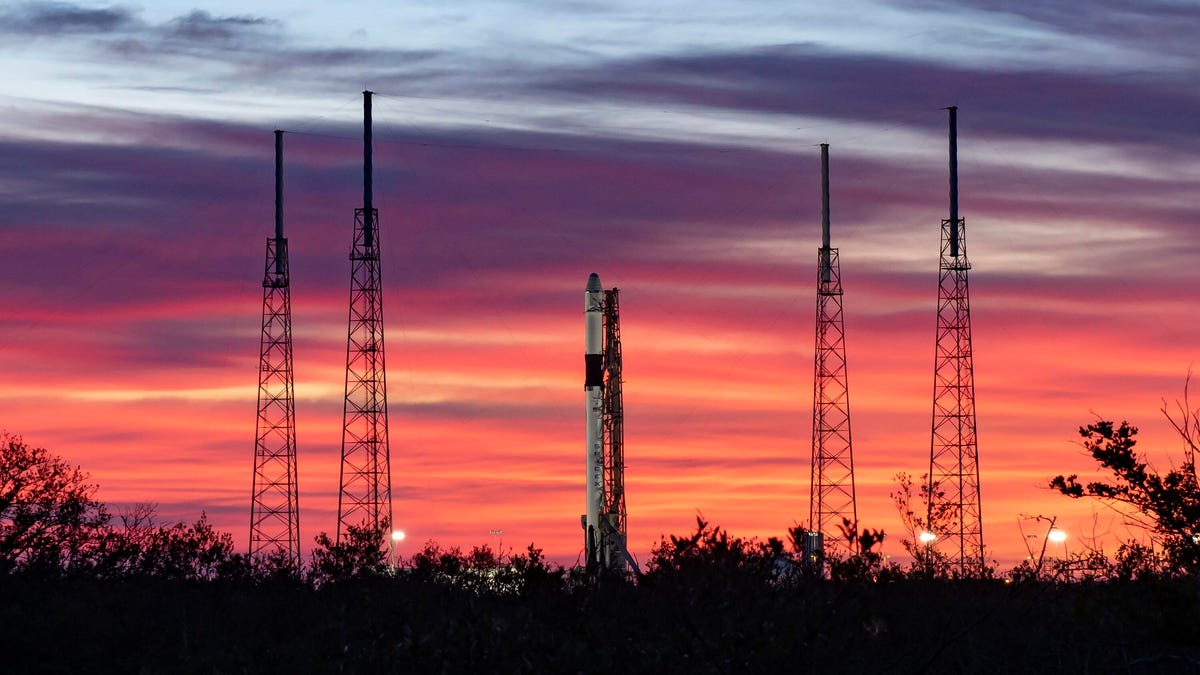SpaceX launches Dragon capsule to ISS with 'mighty mice,' beer barley aboard
A new Falcon 9 booster sent the capsule ferrying science cargo on its way to the space station.

The Falcon 9 before launch Thursday
SpaceX successfully sent all sorts of science on its way to the International Space Station on Thursday. A new Falcon 9 booster lifted a Dragon capsule, carrying several scientific payloads and a handful of CubeSats for NASA , direct to the ISS, from Space Launch Complex 40 at Cape Canaveral Air Force Station, Florida.
Blastoff was initially set for Wednesday but got delayed nearly 24 hours by high-altitude winds and choppy seas that could have affected the droneship landing pad in the Atlantic Ocean.
The rocket lifted off just before 12:30 p.m. ET (9:30 a.m. PT). Dragon's trip to the ISS will take three days, with an arrival of Dec. 8.
The mission, known as CRS-19, is the 19th resupply voyage for SpaceX and the third time this particular Dragon capsule is headed to space.
Liftoff! pic.twitter.com/4w7OTmnay1
— SpaceX (@SpaceX) December 5, 2019
The Falcon 9 booster landed on the droneship Of Course I Still Love You about eight minutes after launch to be reused in subsequent missions by SpaceX, while the Dragon capsule starts its journey to the ISS. SpaceX's previous launch knocked down two more recycling milestones, including reusing a Falcon 9 booster and sticking the landing for a fourth time. That landing took place on the Of Course I Still Love You droneship and the same capture is expected during this mission.
A number of intriguing experiments are headed to the ISS on this resupply mission. The Japanese space agency, JAXA, is sending up a new, high-resolution imager to study Earth's surface and identify different materials, and brewing giant Anheuser-Busch InBev will be testing how microgravity affects barley malting. Forty mice are also in for the ride of their lives, as researchers aim to better understand how bones and muscles are affected by prolonged time in space.
"Mighty Mice" are launching to the @Space_Station onboard @SpaceX #CRS19. Learn how this space-based-research aims to help patients here on Earth. pic.twitter.com/Yj7R1ddlHw
— ISS National Lab (@ISS_CASIS) December 3, 2019
Additional experiments will assess the way fire spreads in space and a new way to store robots that can detect leaks on the outside of the ISS. After the last Sherlock Holmes-esque mystery -- "Where did the hole in the space station come from?" -- that sounds like a necessary upgrade.
Originally published Dec. 1.
Update, 9:33 a.m. PT: Added details about the successful launch.



